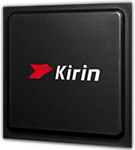
Qualcomm Snapdragon 865 Benchmark, Test and specs
Last updated:
The Qualcomm Snapdragon 865 has 8 cores with 8 threads and is based on the 7. gen of the Qualcomm Snapdragon series. The processor was released in Q4/2019. The Qualcomm Snapdragon 865 scores 845 points in the Geekbench 5 single-core benchmark. In the Geekbench 5 multi-core benchmark, the result is 3,295 points.

| Name: | Qualcomm Snapdragon 865 |
|---|---|
| Family: | Qualcomm Snapdragon (102) |
| CPU group: | Qualcomm Snapdragon 865/870 (3) |
| Architecture: | Kryo 585 |
| Segment: | Mobile |
| Generation: | 7 |
| Predecessor: | -- |
| Successor: | -- |
CPU Cores and Base Frequency
The Qualcomm Snapdragon 865 has 8 CPU cores and can calculate 8 threads in parallel. The clock frequency of the Qualcomm Snapdragon 865 is 2.84 GHz. The number of CPU cores greatly affects the speed of the processor and is an important performance indicator.
| CPU Cores / Threads: | 8 / 8 |
|---|---|
| Core architecture: | hybrid (Prime / big.LITTLE) |
| A-Core: | 1x Kryo 585 Prime |
| B-Core: | 3x Kryo 585 Gold |
| C-Core: | 4x Kryo 585 Silver |
| Hyperthreading / SMT: | No |
|---|---|
| Overclocking: | No |
| A-Core Frequency: | 2.84 GHz |
| B-Core Frequency: | 2.42 GHz |
| C-Core Frequency: | 1.80 GHz |
Artificial Intelligence and Machine Learning
Processors with the support of artificial intelligence (AI) and machine learning (ML) can process many calculations, especially audio, image and video processing, much faster than classic processors. Algorithms for ML improve their performance the more data they have collected via software. ML tasks can be processed up to 10,000 times faster than with a classic processor.
| AI hardware: | Qualcomm AI engine |
|---|---|
| AI specifications: | -- |
Internal Graphics
The Qualcomm Snapdragon 865 has integrated graphics, called iGPU for short. Specifically, the Qualcomm Snapdragon 865 uses the Qualcomm Adreno 650, which has 512 texture shaders and 2 execution units. The iGPU uses the system's main memory as graphics memory and sits on the processor's die.
| GPU name: | Qualcomm Adreno 650 |
|---|---|
| GPU frequency: | 0.25 GHz |
| GPU (Turbo): | 0.59 GHz |
| Compute units: | 2 |
| Shader: | 512 |
| Hardware Raytracing: | No |
| Release date: | Q4/2019 |
| Max. displays: | 1 |
|---|---|
| Generation: | 6 |
| Direct X: | 12.0 |
| Technology: | 7 nm |
| Max. GPU Memory: | -- |
| Frame Generation: | No |
Hardware codec support
A photo or video codec that is accelerated in hardware can greatly accelerate the working speed of a processor and extend the battery life of notebooks or smartphones when playing videos.
| h265 / HEVC (8 bit): | Decode / Encode |
|---|---|
| h265 / HEVC (10 bit): | Decode / Encode |
| h264: | Decode / Encode |
| VP8: | Decode / Encode |
| VP9: | Decode / Encode |
| AV1: | No |
|---|---|
| AVC: | Decode |
| VC-1: | Decode |
| JPEG: | Decode / Encode |
Memory & PCIeThe processor can use up to 16 GB memory in 4 (Quad Channel) memory channels. The maximum memory bandwidth is 44.0 GB/s. The memory type as well as the amount of memory can greatly affect the speed of the system. |
|
| Memory type: | Memory bandwidth: |
|---|---|
| LPDDR5-5500 LPDDR4X-4266 | 44.0 GB/s 34.1 GB/s |
| Max. Memory: | 16 GB |
| Memory channels: | 4 (Quad Channel) |
| ECC: | No |
| PCIe: | |
| PCIe Bandwidth: | -- |
Thermal ManagementThe thermal design power (TDP for short) of the processor is 10 W. The TDP specifies the necessary cooling solution that is required to cool the processor sufficiently. The TDP usually gives a rough idea of the actual power consumption of the CPU. |
|
|---|---|
| TDP (PL1 / PBP): | 10 W |
| TDP (PL2): | -- |
| TDP up: | -- |
| TDP down: | -- |
| Tjunction max.: | -- |
Technical details
The Qualcomm Snapdragon 865 is made in 7 nm. The smaller the manufacturing process of a CPU, the more modern and energy-efficient it is. Overall, the processor has 5.75 MB cache. A large cache can greatly speed up the processor's speed in some cases such as games.
| Technology: | 7 nm |
|---|---|
| Chip design: | Chiplet |
| Socket: | -- |
| L2-Cache: | 1.75 MB |
| L3-Cache: | 4.00 MB |
| AES-NI: | No |
| Operating systems: | Android |
| Virtualization: | None |
|---|---|
| Instruction set (ISA): | Armv8-A (64 bit) |
| ISA extensions: | -- |
| Release date: | Q4/2019 |
| Release price: | -- |
| Part Number: | SM8250 |
| Documents: | Technical data sheet |
Rate this processor
Benchmark results

The benchmark results for the Qualcomm Snapdragon 865 have been carefully checked by us. We only publish benchmark results that have been created by us or that have been submitted by a visitor and then checked by a team member. All results are based on and fullfill our benchmark guidelines.
Geekbench 5, 64bit (Single-Core)
Geekbench 5 is a cross plattform benchmark that heavily uses the systems memory. A fast memory will push the result a lot. The single-core test only uses one CPU core, the amount of cores or hyperthreading ability doesn't count.

|
Intel Core i3-4350
2C 4T @ 3.60 GHz |
||

|
Intel Core i5-6440EQ
4C 4T @ 3.40 GHz |
||

|
Intel Core i7-6820HQ
4C 8T @ 3.60 GHz |
||
|
|
Qualcomm Snapdragon 865
8C 8T @ 2.84 GHz |
||

|
MediaTek Dimensity 8000
8C 8T @ 2.75 GHz |
||

|
Intel Celeron G5905T
2C 2T @ 3.30 GHz |
||

|
Intel Core i5-4400E
2C 4T @ 3.30 GHz |
||
Geekbench 5, 64bit (Multi-Core)
Geekbench 5 is a cross plattform benchmark that heavily uses the systems memory. A fast memory will push the result a lot. The multi-core test involves all CPU cores and taks a big advantage of hyperthreading.

|
Intel Core i7-4770S
4C 8T @ 3.10 GHz |
||

|
Intel Core i7-6820HQ
4C 8T @ 3.20 GHz |
||

|
Intel Core i7-6870HQ
4C 8T @ 3.20 GHz |
||
|
|
Qualcomm Snapdragon 865
8C 8T @ 2.84 GHz |
||
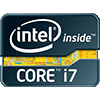
|
Intel Core i7-3820
4C 8T @ 3.60 GHz |
||

|
Intel Core i3-10100TE
4C 8T @ 2.30 GHz |
||

|
Intel Core i7-8565U
4C 8T @ 2.40 GHz |
||
Geekbench 6 (Single-Core)
Geekbench 6 is a benchmark for modern computers, notebooks and smartphones. What is new is an optimized utilization of newer CPU architectures, e.g. based on the big.LITTLE concept and combining CPU cores of different sizes. The single-core benchmark only evaluates the performance of the fastest CPU core, the number of CPU cores in a processor is irrelevant here.

|
Intel Core i5-4670
4C 4T @ 3.80 GHz |
||

|
Intel Core i7-7500U
2C 4T @ 3.50 GHz |
||

|
Intel Core i7-7700HQ
4C 8T @ 3.80 GHz |
||
|
|
Qualcomm Snapdragon 865
8C 8T @ 2.84 GHz |
||

|
Intel Core i5-7400
4C 4T @ 3.50 GHz |
||

|
Intel Core i5-5675C
4C 4T @ 3.60 GHz |
||

|
Qualcomm Snapdragon 888
8C 8T @ 2.84 GHz |
||
Geekbench 6 (Multi-Core)
Geekbench 6 is a benchmark for modern computers, notebooks and smartphones. What is new is an optimized utilization of newer CPU architectures, e.g. based on the big.LITTLE concept and combining CPU cores of different sizes. The multi-core benchmark evaluates the performance of all of the processor's CPU cores. Virtual thread improvements such as AMD SMT or Intel's Hyper-Threading have a positive impact on the benchmark result.

|
Intel Core i7-4800MQ
4C 8T @ 3.70 GHz |
||

|
Intel Core i5-8265U
4C 8T @ 2.30 GHz |
||

|
Intel Core i7-990X
6C 12T @ 3.46 GHz |
||
|
|
Qualcomm Snapdragon 865
8C 8T @ 2.84 GHz |
||
|
|
HiSilicon Kirin 990 5G
8C 8T @ 2.86 GHz |
||
|
|
HiSilicon Kirin 990E 5G
8C 8T @ 2.86 GHz |
||
|
|
HiSilicon Kirin 990 4G
8C 8T @ 2.86 GHz |
||
iGPU - FP32 Performance (Single-precision GFLOPS)
The theoretical computing performance of the internal graphics unit of the processor with simple accuracy (32 bit) in GFLOPS. GFLOPS indicates how many billion floating point operations the iGPU can perform per second.

|
AMD Ryzen 3 3200G
AMD Radeon RX Vega 8 (Raven Ridge) @ 1.25 GHz |
||

|
Intel Core i5-6585R
Intel Iris Pro Graphics 580 @ 1.10 GHz |
||
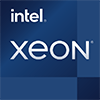
|
Intel Xeon E3-1575M v5
Intel Iris Pro Graphics P580 @ 1.10 GHz |
||
|
|
Qualcomm Snapdragon 865
Qualcomm Adreno 650 @ 0.59 GHz |
||

|
Qualcomm QCM6490
Qualcomm Adreno 643L @ 0.81 GHz |
||
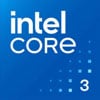
|
Intel Core 3 processor 100U
Intel Iris Xe Graphics 64 (Alder Lake) @ 1.25 GHz |
||

|
Intel Core i3-1305U
Intel Iris Xe Graphics 64 (Alder Lake) @ 1.25 GHz |
||
AnTuTu 9 Benchmark
The AnTuTu 9 benchmark is very well suited to measuring the performance of a smartphone. AnTuTu 9 is quite heavy on 3D graphics and can now also use the "Metal" graphics interface. In AnTuTu, memory and UX (user experience) are also tested by simulating browser and app usage. AnTuTu version 9 can compare any ARM CPU running on Android or iOS. Devices may not be directly comparable when benchmarked on different operating systems.
In the AnTuTu 9 benchmark, the single-core performance of a processor is only slightly weighted. The rating is made up of the multi-core performance of the processor, the speed of the working memory, and the performance of the internal graphics.
In the AnTuTu 9 benchmark, the single-core performance of a processor is only slightly weighted. The rating is made up of the multi-core performance of the processor, the speed of the working memory, and the performance of the internal graphics.

|
Google Tensor
8C 8T @ 2.80 GHz |
||

|
MediaTek Dimensity 1300
8C 8T @ 3.00 GHz |
||

|
MediaTek Dimensity 1200
8C 8T @ 3.00 GHz |
||
|
|
Qualcomm Snapdragon 865
8C 8T @ 2.84 GHz |
||

|
Apple A13 Bionic
6C 6T @ 2.65 GHz |
||

|
MediaTek Dimensity 1100
8C 8T @ 2.60 GHz |
||

|
Qualcomm Snapdragon 778G+
8C 8T @ 2.50 GHz |
||
AnTuTu 8 Benchmark
The AnTuTu 8 Benchmark measures the performance of a SoC. AnTuTu benchmarks the CPU, GPU, Memory as well as the UX (User Experience) by simulating browser and app usage. AnTuTu can benchmark any ARM CPU that runs under Android or iOS. Devices may not be directly compareable if the benchmark has been performed under different operating systems.
In the AnTuTu 8 benchmark, the single-core performance of a processor is only slightly weighted. The evaluation consists of the multi-core performance of the processor, the speed of the RAM and the performance of the internal graphics.
In the AnTuTu 8 benchmark, the single-core performance of a processor is only slightly weighted. The evaluation consists of the multi-core performance of the processor, the speed of the RAM and the performance of the internal graphics.

|
Qualcomm Snapdragon 865+
8C 8T @ 3.10 GHz |
||

|
Google Tensor
8C 8T @ 2.80 GHz |
||
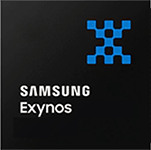
|
Samsung Exynos 2100
8C 8T @ 2.90 GHz |
||
|
|
Qualcomm Snapdragon 865
8C 8T @ 2.84 GHz |
||

|
Qualcomm Snapdragon 860
8C 8T @ 2.96 GHz |
||

|
Apple A13 Bionic
6C 6T @ 2.65 GHz |
||

|
Qualcomm Snapdragon 778G
8C 8T @ 2.40 GHz |
||
Estimated results for PassMark CPU Mark
Some of the CPUs listed below have been benchmarked by CPU-monkey. However the majority of CPUs have not been tested and the results have been estimated by a CPU-monkey’s secret proprietary formula. As such they do not accurately reflect the actual Passmark CPU mark values and are not endorsed by PassMark Software Pty Ltd.

|
Intel Core i7-4770T
4C 8T @ 3.20 GHz |
||

|
AMD Phenom II X6 1100T
6C 6T @ 3.70 GHz |
||

|
Intel Core i7-3940XM
4C 8T @ 3.00 GHz |
||
|
|
Qualcomm Snapdragon 865
8C 8T @ 2.84 GHz |
||

|
Intel Core i7-4800MQ
4C 8T @ 3.70 GHz |
||

|
Intel Pentium Gold G7400T
2C 4T @ 3.10 GHz |
||

|
Intel Core i3-1115G4E
2C 4T @ 3.90 GHz |
||
Performance for Artificial Intelligence (AI) and Machine Learning (ML)
Processors with the support of artificial intelligence (AI) and machine learning (ML) can process many calculations, especially audio, image and video processing, much faster than classic processors. The performance is given in the number (trillions) of arithmetic operations per second (TOPS).

|
Apple A15 Bionic (4-GPU)
6C 6T @ 3.23 GHz |
||

|
Apple A15 Bionic (5-GPU)
6C 6T @ 3.23 GHz |
||

|
Apple M2
8C 8T @ 0.66 GHz |
||
|
|
Qualcomm Snapdragon 865
8C 8T @ 2.84 GHz |
||

|
Qualcomm Snapdragon 870
8C 8T @ 3.20 GHz |
||

|
Samsung Exynos 990
8C 8T @ 2.73 GHz |
||

|
Qualcomm Snapdragon 865+
8C 8T @ 3.10 GHz |
||
Benchmarks

Geekbench 5 (SC)
2,479 entries
2,479 entries

Geekbench 5 (MC)
2,452 entries
2,452 entries

Geekbench 6 (SC)
1,745 entries
1,745 entries

Geekbench 6 (MC)
1,693 entries
1,693 entries

FP32 SP (iGPU)
2,010 entries
2,010 entries

AnTuTu 9 Benchmark
90 entries
90 entries

AnTuTu 8 Benchmark
118 entries
118 entries
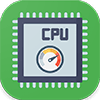
PassMark CPU-Mark
2,386 entries
2,386 entries

AI / ML Performance
106 entries
106 entries
Description of the processor
The Qualcomm Snapdragon 865 is a smartphone and tablet processor from Qualcomm. It is in the high-end segment and has 8 CPU cores that are designed in a hybrid core layout. This consists of a high-clocked Prime core (Kryo 585 Prime) that can reach a clock frequency of up to 2.84 GHz.The Prime core is supported by 3 additional Kryo 585 Gold CPU cores with a clock frequency of up to 2.42 GHz. Four very energy-efficient Kryo 585 Silver CPU cores with a very low clock speed of 1.8 GHz round off the CPU layout at the bottom.
When it comes to AI acceleration, the Qualcomm Snapdragon 865 has the Qualcomm AI Engine. The manufacturer does not specify how quickly this solution is.
The Qualcomm Snapdragon 865 uses an Adreno 650 for graphics. With 650 texture shaders and an FP32 graphics performance of almost 1.3 TFLOPS, the Qualcomm Adreno 650 can play all common 3D games on the smartphone smoothly. The clock frequency of the graphics reaches a maximum of approx. 0.6 GHz.
The Qualcomm Snapdragon 865 can address up to 16 GB of RAM. The SoC has four 16-bit wide memory channels available for this purpose. Both the newer LPDDR5-5500 memory (maximum memory bandwidth 44 GB/s) and the older LPDDR4-4266 memory with a maximum memory bandwidth of 34.1 GB/s are supported.
The TDP (Thermal Design Power) of the Qualcomm Snapdragon 865 is around 10 watts. The manufacturer does not publish exact data, so this value was determined based on software data during benchmarks.
The Qualcomm Snapdragon 865 is manufactured using a 7 nm process. The Level 2 cache is 1.75 MB in size and is supplemented by another 4 MB Level 3 cache. The Qualcomm Snapdragon 865 is still based on the ARM v8 architecture, which Qualcomm used under license and slightly adapted in the Qualcomm Snapdragon 865.
Popular comparisons
back to index



